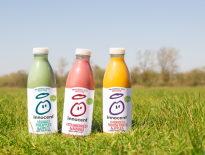Direct mail … isn’t that a dead marketing channel?
For many smaller business owners, direct mail may not be the first option in their marketing plan especially in this digital age. However, there is much proof showing that this isn’t a dead channel and brings a good return on investment (ROI).
One of direct mails great strengths is to help build up a localised brand as part of a wider marketing strategy attracting and engaging with targeted audiences.
If direct mail is not in your marketing plan you should consider its inclusion for many reasons.
Does direct mail still work?
So, if I said that digital giant Google use their database to send out direct mail to target audiences, would you believe it? Also, around five years ago, businesses invested £1.5 billion into direct mail marketing, so would you think it is a dead strategy?
It is clear that direct mailing still carries some weight in today’s marketing world. Personalisation is essential for direct mail and it helps it get past all those digital and online distractions – 84% of research participants were more likely to open mail due to a personalised approach.
Attracts and engages
If you’ve posted or indeed advertised on social media, do you ever think ‘will my audience, remember me, my business name or what I’ve said?’
Research suggests that audiences have recalled brands 75% of the time after viewing direct mail compared to digital content at just 44%. This proves that mailers can influence an emotional connection better than digital content. It is a fact that direct mail marketing requires 21% less cognitive effort compared to digital.
Another big advantage of direct mail is that you can get your message across without other distractions, comparisons or notifications you get online. That can help the audience make a decision on a product or service by providing creative informative content.
Also, an impressive 66% of direct mails in the UK are opened, which influences a staggering 56% of audiences to visit websites and physical stores following the exposure? This suggests direct mail campaigns get a high response rate and influence target markets.
It is said that, on average, 39% of homes have a dedicated area for direct mail … you know that ’busy kitchen noticeboard’ … where mail is kept.
Good ROI
Naturally there are costs linked to postal services, but direct mailers, when comparing a mixture of marketing methods, stand as the third highest when considering return of investment. This is ahead of paid search and online display.
If you are looking for a steady return with your marketing material, adding direct mail to your list should be a priority.
Making direct mail campaigns work
To ensure a successful direct mail campaign, consider the following:
- The message must connect emotionally with your target audience
- Their ‘pain points’ must be addressed
- Your offering must be clear and concise
- Creatively attention-grabbing
With today’s digital print technology, direct mailers can be much more than a post card or simple letter through your audience’s letterbox. Think about including QR codes, VR links and materials, or using customisable designs and shapes. It must stand out amongst other mail, be unique and have a visually appealing design.
With the right knowledge and support, direct mail can be very successful, even in comparison to alternative marketing channels. From a stand-alone campaign to a fully integrated message across all your marketing channels, direct mailers can play a major part in your planned marketing activities.
And finally…
Now, after being convinced that direct mail is worthy of inclusion in your marketing mix; you’ve taken advice and guidance from a reputable marketing expert; got some great, but simple creative to promote your product or service … BUT have you thought about the paper stock you’re going to use?
This can make or break your campaign … too thin and cheap paper, the recipient bins it as the impression of you is just that! If you are arranging print, then take time to talk to your printer about paper stock and finish.
However, as a rough guide, a smooth paper stock allows for the most detailed images, with vivid colours and sharp contrasts, while textured paper invites recipients to adopt a more tactile approach.
Smooth paper stock is the go-to option for coupons, flyers, free magazines, etc … it can have a glossy, matte, semi-matte or silky coating. Textured paper exudes a luxurious feel and is recommended for high value direct mail (cosmetics, fashion, automotive industry, etc.).
As well as deciding between smooth and textured, selecting a suitable paper stock for your direct mailing campaign comes down to choosing the right weight or thickness. Luxury, high value items call for heavier paper, while a money-off coupon booklet gets away with thinner (cheaper) paper option.
As a guide:
- 80-100 g/m² is the thickness of your standard office paper, and rarely used for direct mail printing.
- 110-120 g/m² is ideal for fancy stationery paper and the like.
- 130-170 g/m² This weight is perfect for flyers, posters and brochures.
- 170-200 g/m² is the preferred thickness for luxurious posters, double-sided flyers and brochure covers.
- 200-250 g/m² leans toward cardboard. This thickness is recommended for high-quality brochure covers.
- 300-400 g/m² is what you might call the cardboard category. It’s also where business cards start.
- +400 g/m² is mostly selected for top-of-the-line business cards and other types of luxury prints.
Research sources: PCS Systems
Originally posted 2021-06-02 14:35:44.
- Insights into marketing a small business - January 8, 2026
- Direct mail … isn’t that a dead marketing channel? - November 22, 2025
- Making the most of an uncertain world - August 15, 2025






